Many people have that instant “cringe” reaction when coming face to face with a spider, sometimes to the point of developing a phobia (a strong aversion). And yet, these bugs are special; they even have their own scientific designation: they are called arachnids.
Did you know? Spiders are generally shy and prefer to flee from danger rather than confront it.
In Québec, spiders fulfill a very useful role in nature: every year, they devour thousands of tons of harmful insects like caterpillars, various bugs (including bed bugs) and aphids. Some capture their prey in a web, others hunt them. This short guide will give you an outline of their behaviour in the province of Québec, plus a few tips to get along with them, both indoors and outdoors.
Appearance
Approximately 12 different species of domestic spiders are known to be indoor dwellers. Their colour varies from greyish white to black, and some of them have distinctive markings on their body. Although different species can look different, all spiders have a body that is divided in two distinct parts that are connected by a very small waist, namely the cephalothorax (or prosome) and the abdomen.
Spiders have no antennae or wings. However, they have two mandibles, two palps, eight legs, and up to eight eyes—which doesn’t prevent them from often being near-sighted. They like to spin their webs in dark corners in a house: beneath furniture or any other area where other insects also live.
Other species often seen in Greater Montréal are wolf spiders, cellar spiders, and fishing spiders.
Wolf spiders don’t spin webs, but rather hunt their prey. They measure up to 1 in. (3 cm) long and are dark brown. They live on the ground in gardens, fields, beaches and forests.
Picture: wolf spider capturing a red ant:
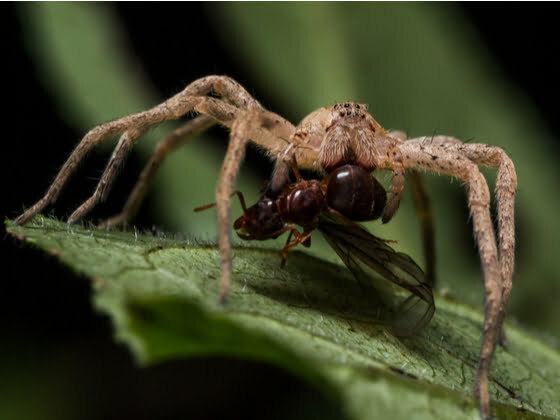
Cellar spiders are easily recognized by their long, fine legs. They are completely harmless. They like to spin their webs in cool, dark cellars. To get rid of them, you need only remove their webs and decrease humidity levels.
Picture: cellar spider:
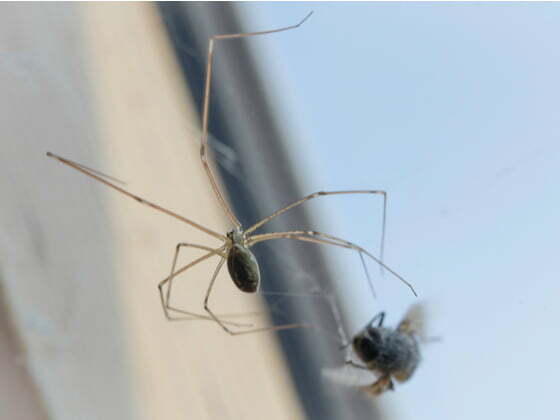
Fishing spiders look like wolf spiders, except for their eyes, which are placed differently, and their size—it can reach up to 3 in. (7.5 cm) wide. They prefer aquatic environments and tend to live near rocks on the shore. And like wolf spiders, they hunt; they can even catch small fish.
Picture: Fishing spider on the hunt:
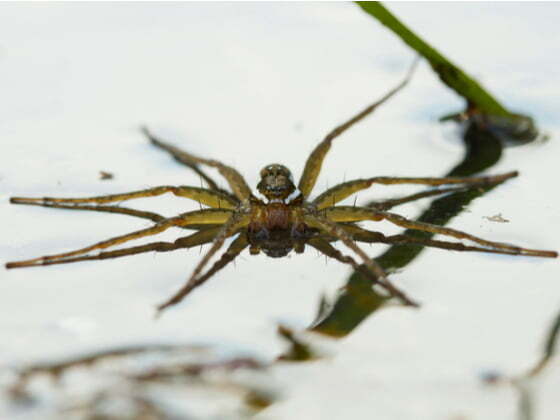
And, finally, even if we do sometimes hear stories about black widow spiders, these live mostly in the southern part of the province of Québec, along the American border; they are not widespread. They have a black and shiny body with a red, hourglass-shaped mark under their abdomen.
Their webs are small, spun near to the ground in isolated areas like a garage, a shed, crawl spaces, outdoor toilets, under rocks or fallen trees.
Picture: Black widow spider.
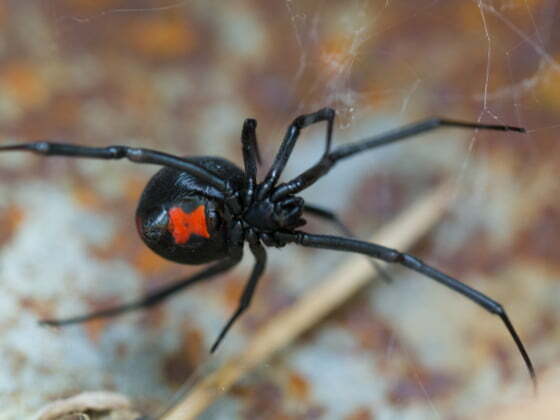
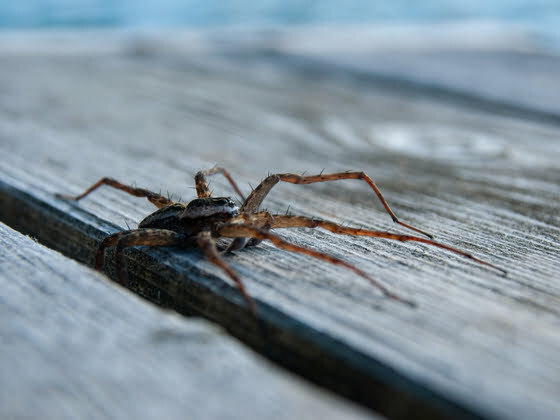
Life Cycle
A female spider can lay up to about fifty eggs held in a little silk pouch, and can produce 9 egg pouches per season. If environmental conditions are favourable, the pouches will hatch after one week. Young spiders mature through successive shedding of their exosqueletons.
Picture: Spider carrying its egg pouch.
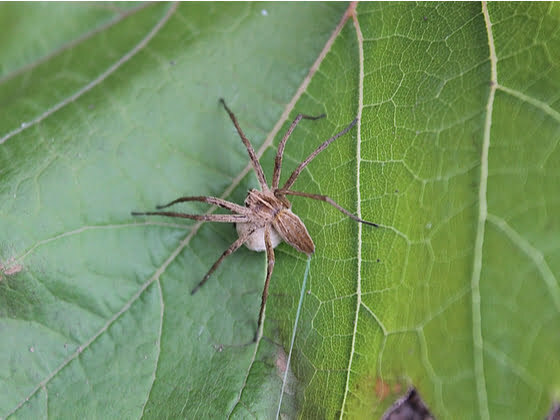
Habitat and Diet
Depending on the habits of each species, spiders are sometimes found in a pile of firewood, in or on clothing and vegetation brought in from outdoors. Once indoors, they will often choose discrete hiding places like an attic, a cellar or a crawl space to spin their webs. However, they can also decide to stay around windows or near a source of exterior light, as they are attracted by other insects also living there.
Harmful Effects
Spiders are known for spinning webs using silk that is produced by tiny articulated tubes called spinnerets, located more or less at the extremity of their abdomen. These webs can accumulate both indoors and outdoors. The fact that spiders regrettably provoke reactions of disgust or phobia is quite involuntary on their part. They can multiply rapidly and infest a house, a garden or a flower bed.
Picture: Nest of day-old baby spiders:
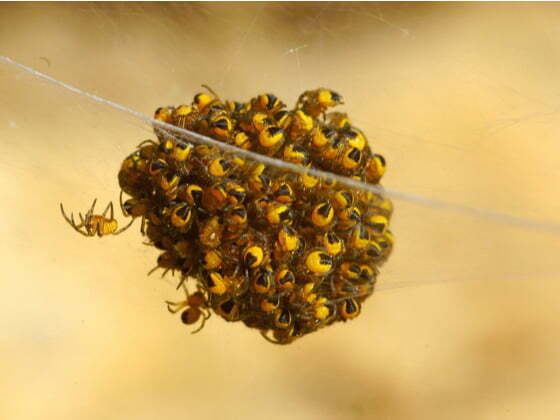
One of the only spider species in Canada that can bite is the very rare black widow, and even then, it will only bite to defend itself. Even if its bite is venomous, it is generally not lethal. If its presence is nonetheless a possibility where you live, be cautious while working in isolated areas where you notice cobwebs; if necessary, wear gloves.
How can I know if I’ve been invaded by spiders?
Obviously, finding cobwebs in various places in your home is a classic sign that spiders are present (although, as mentioned earlier, some spider species do not produce webs).
The presence of spiders is often linked to the presence of other insects, a source of food.
Picture: Spider and cobweb infestation.
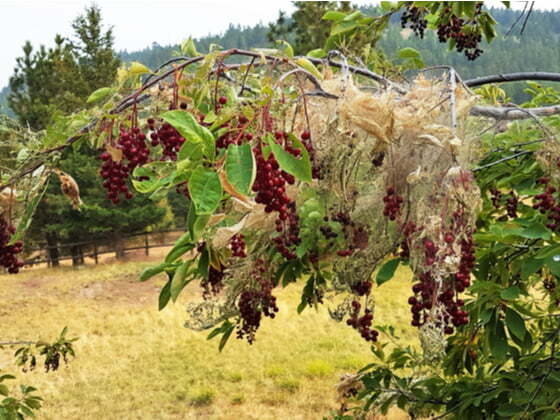
Exterminator tips
“If you are invaded by spiders, the first thing you need to realize is that they help reduce the population of other harmful insects in your environment. For this reason, we generally recommend to tolerate their presence if their numbers do not interfere with your usual activities, or if their presence does not stain or discolour your home’s outdoor siding. If their presence becomes troublesome and you still prefer to reduce their numbers around your home, the first and easiest step you can take is to turn off outdoor lighting in the evening, as soon as the sun sets. Doing this will ward off flying insects, making your house much less interesting to spiders! Another strategy that can work is to repeatedly destroy all cobwebs, which will force the spiders to move elsewhere to spin their next web. If you suffer from arachnophobia (a strong aversion to, or a fear of spiders), an exterminator can apply a preventive treatment designed to reduce the quantity of insects in your environment, which will then result in the reduced presence of spiders both inside and outside your home.”
Jacques, exterminator at AJS for 30 years.
Tips to prevent and eliminate a spider infestation
Lucky for us, arachnids are not complicated! It’s simple: if you don’t want spiders in your home, don’t attract their prey—other insects.
Prevention:
- Prevent other insects in general from entering your home by repairing mosquito netting, and caulking/weatherstripping around doors and windows.
- A few spiders in the crawl space or the basement/cellar is in fact beneficial, as the spiders will eat earwigs and other insects. So, if you’re working in these areas, wear gloves to protect yourself from a possible bite which will happen, we repeat, only if the spider feels under attack.
- Broom or vacuum floors, along baseboards and in corners to eliminate any food crumbs.
- Remove cobwebs when the spiders are not there.
- Don’t leave clothing, shoes or blankets on the floor—spiders like to hide there.
- Outdoors, install yellow-coloured electric lightbulbs; this will attract fewer insects and as a result, fewer spiders.
- For outdoor toilets, always check under the toilet seat and keep the toilets clean. Caulk/weatherstrip the door and install mosquito netting over all openings.
Elimination:
- Use a brush or a broom to push back outdoors any spiders you see near doors or windows.
- If necessary, kill the spiders with a fly swatter.
- In the case of a serious and disruptive infestation indoors or outdoors, the use of a pesticide should be considered only as a last resort. However, read and rigorously follow all instructions on the product’s label. Use a product that is approved by the Québec government for domestic use against spiders.
AJS is the specialist you need to get rid of spiders
The certified technicians at AJS hold the necessary permits to use commercial grade insecticides efficiently while ensuring the occupants’ safety. Once on the premises, they assess the scale of the problem caused by the presence of spiders so as to be able to determine a customized treatment at a competitive price.
The following steps will contribute to the success of your exterminator’s application of the recommended treatment:
- For application of a treatment in liquid form, the areas to be treated should be made accessible (clear the space along the walls, around cracks and fissures in dark and damp areas).
- Consult the technician about the possible need of a treatment for the exterior.
- Plan to be absent from your home during the treatment and return after 4 hours. If possible, open windows for 20 minutes on your return. It is also important not to walk barefoot on the treated areas for 48 hours.
Contact your exterminator on the South Shore for a quote and a quick treatment that will give you instant results!
Why trust our pest control services?
Choosing an exterminator isn’t something you can do lightly! Offers abound in the extermination sector, but a few important factors should be part of your research before you contact an exterminator: Do they offer a guarantee on their work? Does the company have sufficient experience? Is it possible to talk with a technician to obtain advice on prevention in order to avoid another infestation?
Don’t hesitate to call us — we’ll be glad to explain why thousands of customers value our service!
Outstanding service
Our exterminators perform honest work and provide advice on prevention so as to ensure long-term results.
Advanced technology
Our investment in new technologies ensures we achieve the best results to detect and exterminate insects.
Guaranteed results
We guarantee results of our complete treatments for the extermination of parasites according to the exterminator’s recommendation.
Ecofriendly methods
We always consider using integrated pest management methods (whether mechanical or biological solutions) before opting for methods that use chemicals.